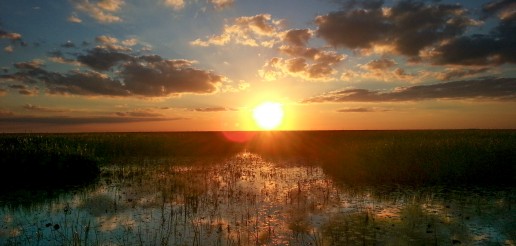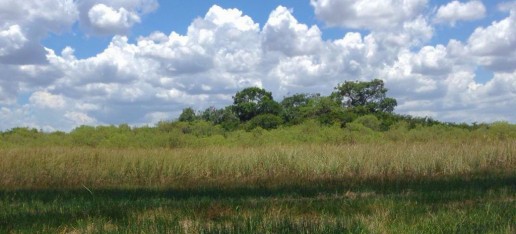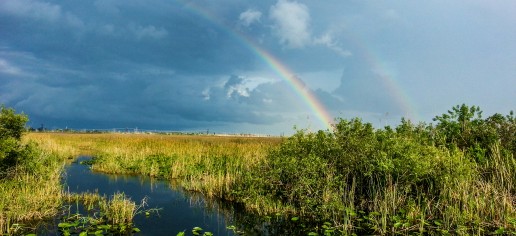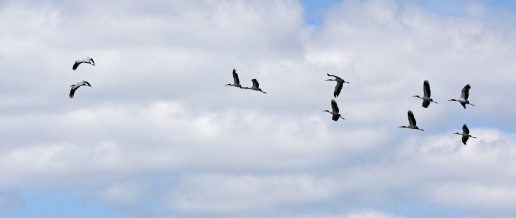4 Reasons Why Burmese Pythons Are Overrunning The Everglades
Where does the third largest living snake in the world sit? If it is in Florida, wherever it wants to.
Burmese pythons have earned a reputation for slithering their way to the top of the Everglades food web since their first sightings in the 1980’s. These massive constrictors have become the most notorious invasive species in South Florida, but why? They likely arrived the way most Everglades invasive species do, being released by pet owners or the exotic animal trade.
So, how is this particular invasive seemingly taking over the Everglades ecosystem?
They Reproduce Quickly
Burmese pythons reach maturity between 18 months and 4 years of age, and females can produce a clutch of 35 to 50 eggs or more. They also have a lifespan that can last up to 25 years. With impressive stats like these, it makes their numbers difficult to track.
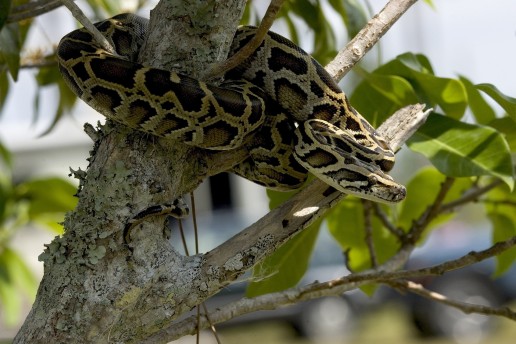
The Everglades Climate is Very Hospitable
There are many invasive species that have adopted the Everglades as their home. Burmese pythons are not only suited for the South Florida climate, but the Everglades ecosystem is like home to them. Originating from the rainy jungles and swamps of southeast Asia, these semi-aquatic creatures are right at home on the River of Grass.
They Are Great At Hiding
By preying on the American alligator, Burmese pythons are now the apex predator of the Everglades. But they have another title that’s helped them thrive as they have: Hide And Seek Champion.
They prefer hiding in underbrush or in holes near rivers, and are also great swimmers. In addition to being able to camouflage themselves, they’re nocturnal. So, their numbers are harder to accurately track, because most recorded sightings are made during the day.
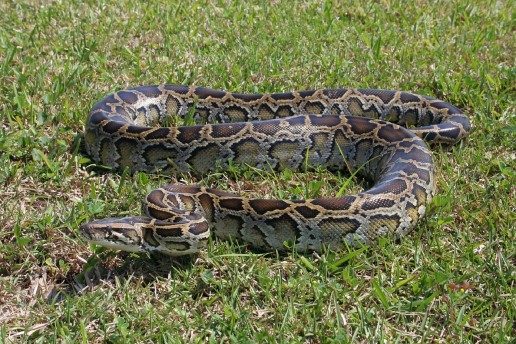
They Are Opportunistic Eaters
You would consider a guest that can eat anything as not being a picky eater. But, if that guest starts eating everything they can, you’d have only your own words to eat. Burmese Pythons have been found to eat a wide variety of Everglades wildlife, including rodents, bobcats, deer, and even alligators!
Their big appetites have like to a steep decline in sightings of rabbits, raccoons, and possums. Because of this, it’s earned the nickname “The snake that’s eating the Everglades”.
South Florida may never be fully rid of these pythons. But, it’s possible that through implementing practical and effective control methods that their population could be managed someday.
When you go for an airboat ride at Mack’s Fish Camp, hopefully you don’t see this Everglades invasive species. While they are shy as most snakes, it could mean trouble for other Everglades wildlife.
Everglades Wildlife Profile: Amphibians
Out of the over 350 animal species living in the Everglades, longer animals like alligators and Burmese pythons get all of the attention, but what about the little guys?
No, not the mosquitoes.
If you look closely, there are frogs, toads, newts and other species of amphibians you can spot on an Everglades eco tour. Amphibians are a class of Everglades wildlife that are as big a part of this environment as wading birds or snakes.
Information About Amphibians
Amphibians are cold-blooded animals that can live on land and in water. In fact, their name comes from the Greek word “amphibios”, which means ”both kinds of life.” When amphibians are young, they spend the first half of their lives solely in the water, then on land after they have physically matured.
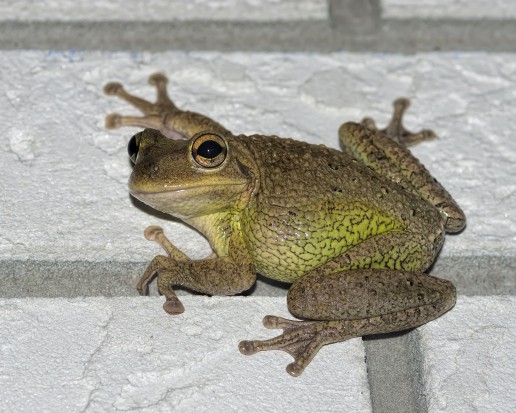
Differences From Reptiles
Unlike reptiles, that prefer to be in or near water, amphibians don’t have a thick outer layer of skin, but a soft thin skin that has to remain wet. Many amphibians can actually breathe through their skin as well as through their lungs.
Amphibians In the Everglades
Residing in wet, humid, and moist habitats, amphibians are a class of Everglades wildlife that are right at home here! Dwelling and nesting near water helps define their role in the Everglades food web. Like their skin, amphibians’ eggs are very soft and need to remain in water. Amphibians and their eggs are a food staple of many Everglades wading birds, like herons and wood storks. But, amphibians feed on insects like mosquitoes, who also lay their eggs in bodies of water.
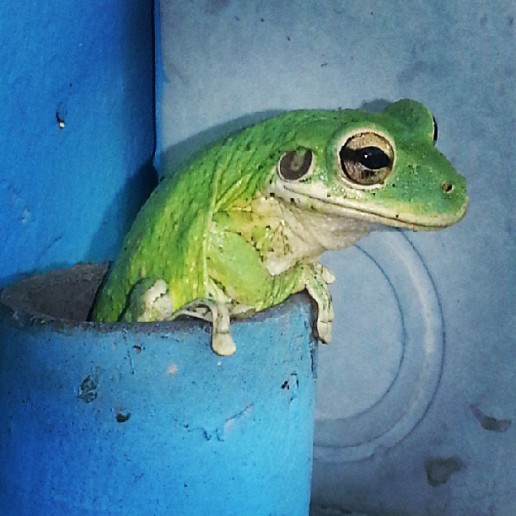
They’re Most Active During Everglades Wet Season
The time of year that amphibians are most active in the Everglades is during the wet season, which lasts from May through November. The abundant moisture and humidity, and the increased activity of insects allow amphibians to thrive. No matter how many frogs and toads you might see, you’ll hear hundreds more croaking and chirping.
The best way to see amphibians like the green tree frog, everglades dwarf siren, and the many other species of Everglades wildlife here is on an airboat ride. On an everglades eco tour, you can observe the biodiversity of this unique environment while learning from true-born Gladesmen that have lived here for generations.
4 Everglades Animals People Haven't Heard Of
Of the many species of wildlife that live in the Everglades, there are only a few that are well-known. The American alligator, Florida panther, and many wading bird species are the first animals people associate with the Florida Everglades. There are also several other Everglades animals native to Florida that make their home here as well, but are overlooked. Here are four of these Everglades hometown heroes.
Everglades Snail Kite
This medium-sized bird of prey differs from other raptors, as it feeds on mollusks, primarily snails. Snail kites are easily identified by their slender, curved bills, which help them to easily extract apple snails, their primary prey, from their shells. Their very specific diet depends upon the water levels and water quality of the Everglades, and they are listed as endangered due to habitat degradation affecting apple snail populations.
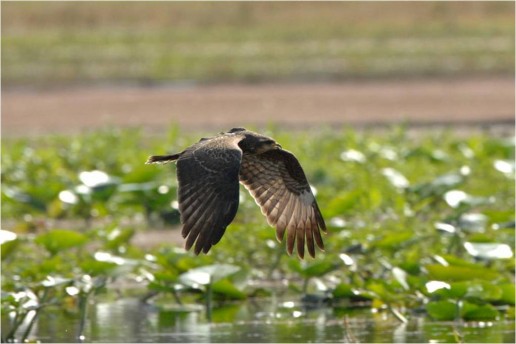
Florida Black Bear
The only species of bear found in Florida, the Florida black bear has adapted to living in a subtropical habitat. It mostly thrives on acorns, palmetto berries, nuts, and holly as well as colonial insects like ants, termites, bees, and wasps. During their breeding season in the summer, black bears consume 5000 calories a day! Florida black bears favor habitats that have a dense understory, and can be found in the forested sloughs, oak scrubs, pine rocklands, and other wooded areas in the Everglades.
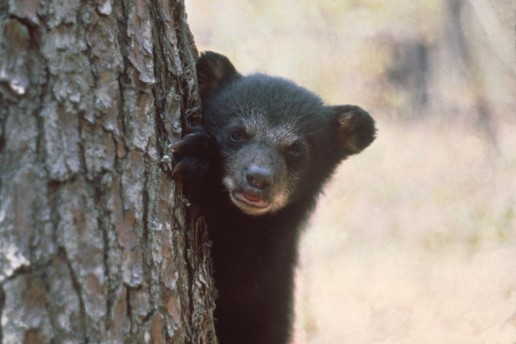
American Purple Gallinule
This colorful bird is found in marshes throughout the tropics, but it’s only year-round residence in America is the Florida Everglades. Named for its mostly purple feathers, its green back, red and yellow bill, blue forehead and long, yellow legs make it a walking rainbow. The purple gallinule also has very long toes to allow it to walk on lily pads and floating vegetation without sinking.
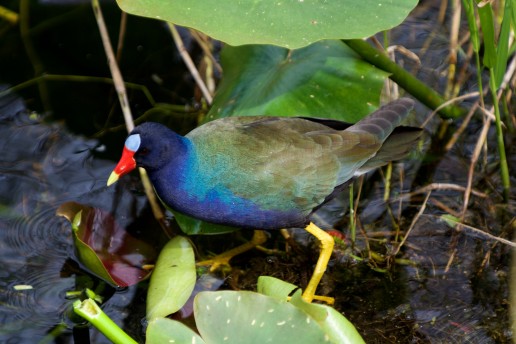
Everglades Mink
One of three species of mink living in Florida, the Everglades mink can be found in swamps and freshwater marshes. These aquatic mammals are nocturnal hunters and fierce fighters, capable of attacking prey larger than them. Everglades mink activity has been observed to increase before storms and other changes in weather.
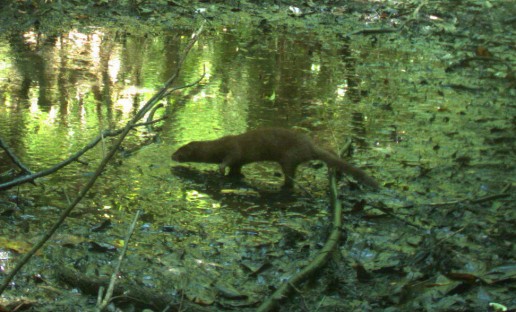
These Everglades animals might not have the star power that alligators and roseate spoonbills do, but their uniqueness to the Florida Everglades makes them equally as important. When you take a private airboat tour at Mack’s Fish Camp, you get a chance to see the magnificent creatures in their natural habitat. Like the Gladesmen Culture that has thrived here for generations, so do countless animal species.
Everglades Airboat Tours: Summer Fun Close to Home!
Going into late July, we’re entering the dreaded “Dog days of summer” in South Florida. You’ve probably taken a family summer vacation out of town, and the kids will be headed back to school in a few weeks. With summertime running out and starting to drag, you might be feeling the itch for one more adventure. So, why not seek it in your own backyard? Everglades airboat tours are a great way to have some late summer family fun in Florida without the theme park price tag
Exciting and Educational All Ages Fun
Taking an airboat ride in the Everglades can be a blast for all ages. Young or old, toddler or teen, Everglades airboat tours provide excitement and exploration for all ages. With a born and bred, fifth-generation Gladesmen as your guide, you’ll learn a lot about the Everglades ecosystem and the over 350 animal species that thrive here.
Theme Park Thrills Without The Lines
While Florida theme parks are bursting with attractions and rides, they’re also bursting with large crowds in the summer. Lines and wait times can be up to 2 hours long for rides that last for only a few minutes. In South Florida, the Everglades is a hidden gem just west of the sunny beaches of Fort Lauderdale, Hollywood, and Miami. When you come to take a private airboat tour at Mack’s Fish Camp, the ride is waiting for you, never the opposite.
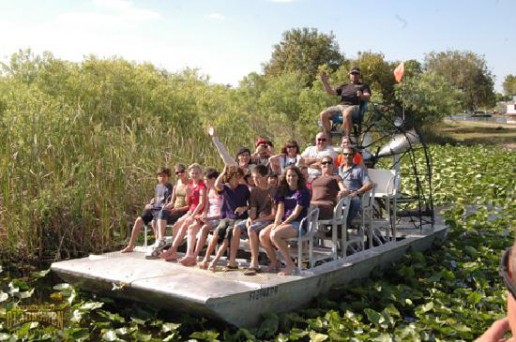
With the many northern visitors Florida receives during the winter, it’s no secret that Florida is warm year-round. The increased humidity coupled with rising temperatures can make even a trip to the beach a tiring ordeal, and The Everglades can feel the heat, too.
In the summer, Everglades airboat tours are best-enjoyed in the morning until noon and in the late afternoon. In addition to the temperature being more hospitable to people then, much of the Everglades wildlife, like the many bird species residing here, are more active then. Also, if you take an airboat ride later in the day, you can witness a vivid, wildly colorful Everglades sunset.
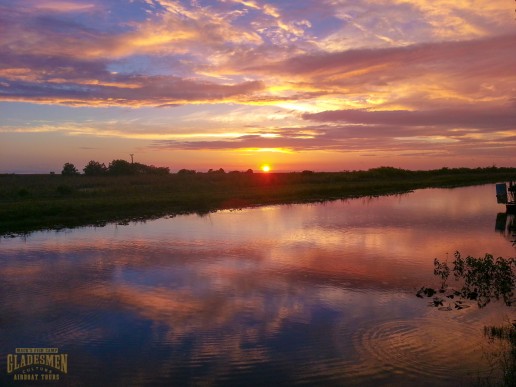
Beat the Heat and See Real Florida Magic
Time and money can take on more importance as summer break draws to a close. Even with the school year looming large, you want to make good use of that extra time with your family. If you live in South Florida, taking an airboat ride at Mack’s Fish Camp in the Everglades is an exciting and affordable way to do that while staying close to home.
See the Everglades or the Beach: Why Not Both?
Many people travel from all over the world to South Florida and visit the beaches in Fort Lauderdale and Miami, and some aren’t aware that the Everglades even exists! Other people who visit Florida are aware of the Glades and snub it entirely, preferring the sea and sand. Being such different places, both have their individual appeal, and we see the Everglades as the overlooked side of the same sunny coin that is Florida.
A Crowded Coast and an Open Wilderness
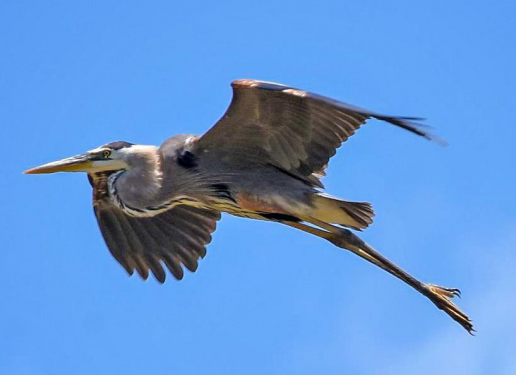
Spending a day at the beach, having the tides wash over your toes can be quite relaxing, but the crowding of the area can reduce that significantly. Out west, past the city and sprawling suburbs, lies 1.5 million acres of undeveloped wilderness that are home to 350 species of birds and 23 endangered and threatened species.
When you’re visiting the coast, the calm of the sea can be overtaken by the noise and clutter of the city, which can be as tiresome as it is charming. For what the Everglades lacks in creature comforts, it more than makes up for in a sprawling landscape waiting to be explored on a private airboat tour.
A Private Airboat Tour: Relaxation and Exploration
Several different habitats make up the vast ecosystem of the Everglades, making it a great place to explore and compliments the static calm of the beach. Camping, hiking and canoeing are all great ways to discover the ecology of Everglades wildlife. Taking a private airboat tour is an exciting way to see the best areas of the River of Grass up close!
Another great way to immerse yourself in the Everglades is to go on a guided fishing charter. You get all of the relaxation of fishing on a beach pier or jetty while venturing into a part of Florida seen by few people.
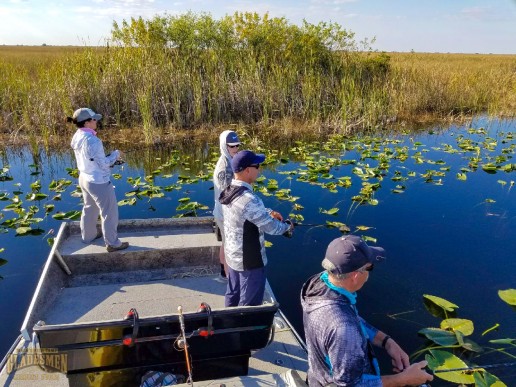
Much to do, and more to see!
The beach has some wildlife, but save for seagulls and pelicans the few animals there are most active at dawn before people start showing up. The Everglades is home to several species of birds, amphibians and reptiles, including the iconic American alligator.
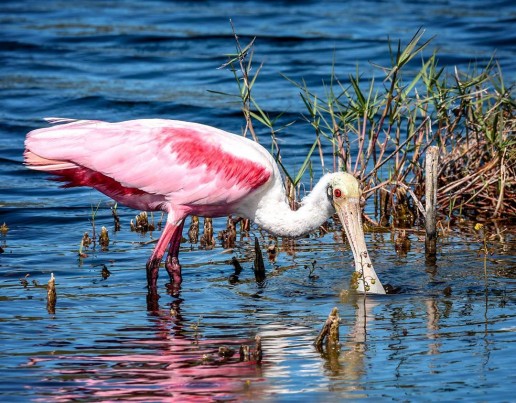
Wading birds like the Great Blue Heron, wood stork, and roseate spoonbill nest here in droves in the winter and raise their young into late spring. Once the wet season begins in June, alligators, frogs and turtles become more visible.
Beauty is in the eye of the beholder, and in South Florida there is plenty of it all around. Some of it is hiding in plain sight, just as easy to miss as it is rewarding to find. When you take a private airboat tour at Mack’s Fish Camp, you’ll discover a hidden treasure more valuable than gold: adventure!
Swamp Squatch: Legend of the Skunk Ape
It’s said that a mysterious creature dwells deep within the Florida Everglades, a large ape that walks upright and stands over seven feet tall. When sightings of it throughout Florida were at their peak in the 1960’s, it was dubbed the “Skunk Ape”. Why call it Skunk Ape and not just Florida Bigfoot? Well, nearly all reported encounters with it mention it smelling like anything from moldy garbage to rotten eggs, or even a skunk.
Sightings in the Everglades and Beyond
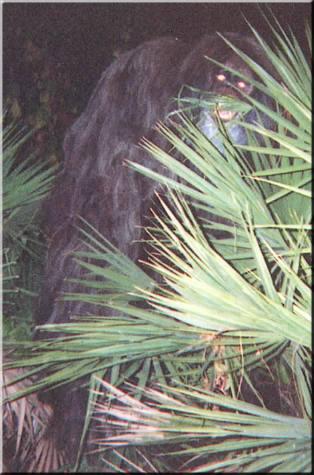
While not as frequent as they were in the 1960’s and 1970’s, sightings of the Skunk Ape are reported in Florida every year, some outside of the Everglades. One of the most noteworthy encounters occurred in the fall of 2000, referred to as the “Myakka Skunk Ape”. The Sarasota Sheriff’s Department received two photographs depicting a large, upright ape along with an anonymous letter from the alleged photograph.
In the letter, which was apparently written by an elderly woman, she snapped photos of the animal she believed had been taking apples she had left in her backyard. The encounter has been picked apart by debunkers and cryptid fans alike. But while the story and creature are scrutinized, the pictures have been confirmed as real and not doctored.
Skunk Ape – Florida Hide and Seek Champion
Apart from being stinky, the Skunk Ape can definitely be described as elusive. Despite a steady flow of video footage from alleged encounters and molds made from footprints, the National Park Service denies the existence of the creature. They cite their many wildlife life trail cameras showing no such animal, or having never discovered any trace of bones in the Everglades.
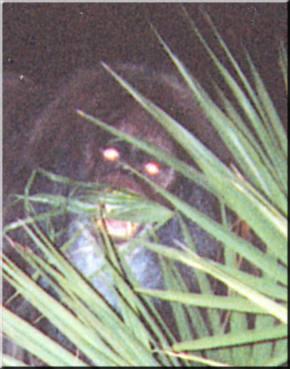
But some of the believers would be quick to tell you that with the Florida Everglades covering 1.5 million acres, and much of it rarely visited by humans, a reclusive animal could thrive there unnoticed without a trace.
A Symbol of a Mysterious Swamp
The Everglades is truly a vast place, full of Florida wildlife capable of deceiving the eyes of the casual visitor. When taking a private airboat tour, you might notice an alligator that you assumed was a floating log, or a diving anhinga that you thought was a water snake. The Skunk Ape isn’t just a campfire tale, but a symbol of the mystery of the Florida wilderness.
Still, don’t hold your breath hoping to see it. But if you do, hold your nose.
2 Seasons in the Everglades?! We Can Explain
The Florida Everglades is a one-of-a-kind environment. But, this is largely due to the fact that Florida is the only state in the continental United States closest to the Tropics. This location makes us both the envy of people living in the blizzard-prone, northern states as well as a coveted winter vacation destination by them.
It’s easy to see why: Florida’s sub-tropical climate lets both residents and visitors alike relax along its many beaches or enjoy the excitement of airboat rides year-round. But the Florida Everglades doesn’t really have four seasons.
Sounds strange, right? We can explain.
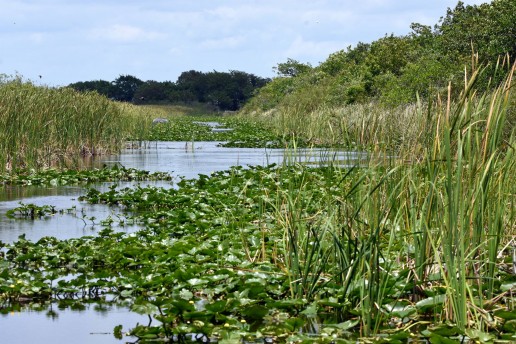
You may recall from science class that the tilt of the earth and its rotation around the sun change the amount of sunlight and heat we get throughout the year, giving us four seasons: spring, summer, autumn, and winter. As we mentioned earlier, Florida’s location being closer to the equator means that it stays warmer on average than other states. Because of Florida being in this fortunate position, the Everglades experiences only two seasons a year.
If you are guessing which ones they are, no, the two seasons are not spring and summer, or even spring and autumn. In fact, differences in sunshine and temperature are not the biggest overall signs of changing seasons in the Everglades. Changes in water levels during the year are what determine which season that the Everglades is currently in.
Everglades Rain Season, Everglades Dry Season
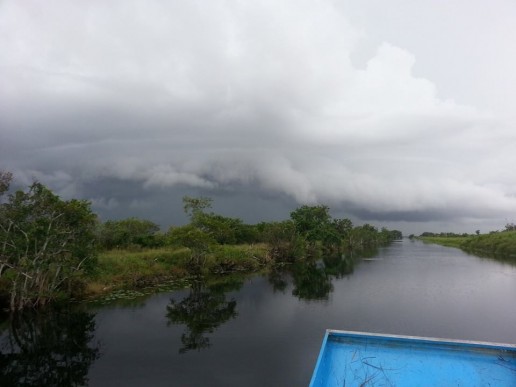
From the middle of May through November, the Everglades experiences heavy rainfall, known as the wet season. Moving into December on through April, there is little to almost no rain, which is known as the dry season. While these two very different seasons sound extreme, the Everglades wildlife treats it like we would a calendar.
The dry season is the peak of bird activity in the Everglades. Migratory birds wait out the cold, northern winds and eventually chase them back home as the temperature rises. The native Florida wading birds use the low water levels to make nests, making dry season and their hatching season one in the same. During the wet season, the alligators, turtles, and frogs nest and hatch, as the wading birds teach their young to hunt.
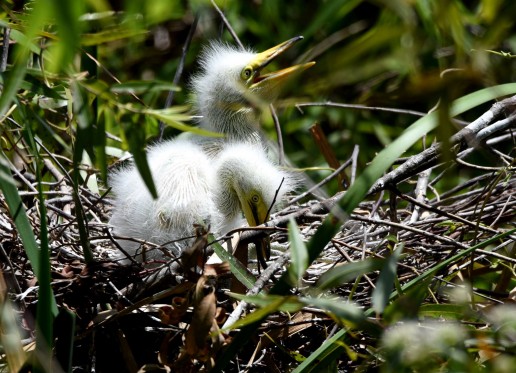
The incredible biodiversity of the Florida Everglades allows you see it thriving at any time of year. With that said, what would you want to see there? You can plan your journey to Mack’s Fish Camp by clicking here.
A Fragile Paradise: Threatened Everglades Wildlife
Here in South Florida, modern life has made the world seem much smaller to people. Unfortunately, the world has literally gotten smaller for several animal species, including those in the Everglades. Their habitat is threatened by human development, as well as longer periods of drought, affecting the water levels that define the Everglades wet and dry seasons. As of January 2017, there are currently 83 species classified as “Federally Endangered” or “Federally Threatened” by the Florida Fish and Wildlife Commission, including:
- Florida Panther
- Everglades snail kite
- Florida scrub-jay
- Florida leafwing butterfly
- American alligator
- Wood stork
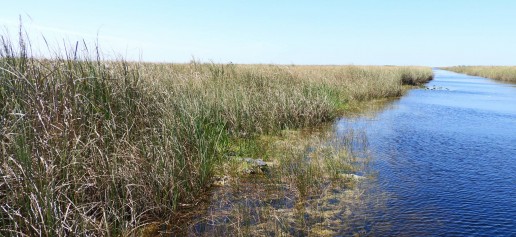
The last two animals mentioned are significant, as both play vital roles in the health of the Everglades’ ecology.
Keystone Everglades Species
Wood storks are one such creature threatened by changes to the Everglades. They are considered to be the “Goldilocks” species of wading birds, because their nesting habits show the health of the Everglades. Wood storks nest during the dry season when water levels are lower, and then feed and train their young as the water and fish population rises.
If the rain season brings too much water, it’s harder for them to find fish to eat. An extended Everglades dry weather season makes their prey scarce.
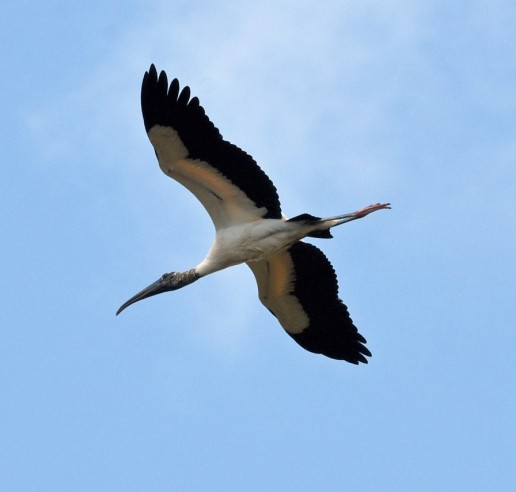
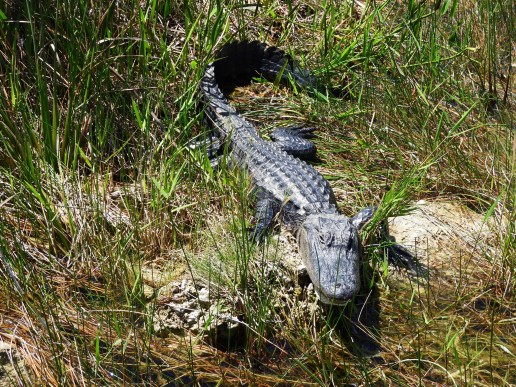
Even the mighty American alligator has seen its numbers decrease, mostly due to human population growth and a demand for their meat and skin. Since being removed from the endangered species list in 1987, their numbers have been improved through farming. Unlike wood storks, alligators play a more direct role in maintaining the environmental health of the Everglades, by making small ponds called alligator holes.
Alligators clear old vegetation when making these holes, which promotes new growth. And once an alligator moves out of one, it can act as a refuge for fish, turtles, birds, and other small animals during the dry season. Even though they have bounced back, they are still listed as “Federally Threatened” due to their similarity of appearance to the American crocodile.

The Florida Everglades is a truly unique place, one that sustains and is sustained by the wide variety of the plants and animals that live here. At Mack’s Fish Camp, appreciation and awareness of the relationship between the many birds, fish, alligators, and the River of Grass is a cornerstone of Gladesmen Culture, and one we’re grateful to share with you. If you’re interested in experiencing the unique beauty of this environment firsthand on one of our Everglades eco tours, please click here.

